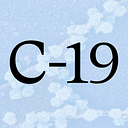How to Effectively Talk About Covid-19 When We All Feel Terrible
A science journalist asks: How do we reach the people who need it most?
These days, I wake up every morning to notifications on my phone broadcasting the latest Covid-19 case count — 12.4 million in the United States by today’s tally — and scream inside my heart.
I scream because 12.4 million people could’ve avoided Covid-19 if they, the people around them, or their local leaders heeded the scientific advice on how to stop the spread. I scream because it isn’t their fault: I scream because it seems like there’s been a failure to communicate the risks to the public, and as a science journalist, I feel complicit.
Of course, the bewilderment I feel in my waking moments isn’t a fair evaluation of the wide range of public health and science messaging about Covid-19, which at its very best has been clear, compassionate, and expert-driven, and at its worst confusing, uninformed, and mired in ugly politics. I have nothing but admiration for the tireless work of my colleagues and peers, and the scientists they work with, in trying to get the word out to as many people who are willing to listen. And many people do listen — just not enough of them.
But when I see people dining indoors, partying at an all-night rave, or crammed in the stands at a football game — or my own friends and family, in an Instagram story, hanging out maskless in someone’s tiny space — I get the feeling that something is being lost in translation, or maybe not being said at all.
How do we reach these people?
On Monday, The Cut published a series of interviews with people who attended huge, secret parties in New York City during the pandemic. This quote sums up the general feeling: “I’m aware that what we are doing is pretty stupid because we’re putting mad people at risk. For some reason, we still kept doing it.” They felt guilty, but they couldn’t help themselves. The story had pandemic fatigue written all over it.
“The bewilderment I feel in my waking moments isn’t a fair evaluation of the wide range of public health and science messaging about Covid-19, which at its very best has been clear, compassionate, and expert-driven, and at its worst confusing, uninformed, and mired in ugly politics.”
At first it made me furious. Then, it occurred to me that my anger might be the reason I’m not connecting with people who do things like this. Perhaps finding empathy for the feeling these people are describing, before trying to talk to them, would help.
Pandemic fatigue is real. Research in PLOS One this month showed that people of all ages followed the rules when the pandemic began in March — hand washing, distancing, and so on — but dropped off by May; first younger people, then older people too. Within two months, people were visiting one another, inviting people over, and going to gatherings with 10 or more people, co-author Jung Ki Kim, PhD, a research associate professor at the University of Southern California, tells me. It was “surprising and concerning,” she says.
I’m concerned, but not that surprised, because I know how it feels to be sick of pandemic life; to be so sad and desperate for normalcy and joy that you want to scream “fuck it,” drink a bottle of bourbon, and dance in a sweaty room full of strangers until dawn, just to remind yourself that life went on, once. (I haven’t done this, but I know the feeling.) I know what it’s like to be so raw and spent from crying after every family Zoom that despair propels you nightly to the checkout page for the plane tickets that could bring you home. This is pandemic fatigue: Being so suffocated by the crushing isolation mandated by science that it seems like the only way to ever breathe again is to do everything you’re not supposed to do.
But of course there are other, safer ways to come up for air.
Jay Maddock, PhD, a professor of public health at Texas A&M University, has been wrestling with how to encourage people to adopt healthy behaviors despite pandemic fatigue. “A lot of times,” he says, “what you see is the idea of people having no social interaction, and when they finally just can’t take it anymore — that’s the pandemic fatigue building up — then they say, ‘I gotta go out and do the riskiest thing I can do.’ Instead of saying, ‘Let’s have a little bit more of a moderate level where you feel comfortable. I can last with this level of protection for the next four or five months that it’ll take to get a widespread vaccine.’”
People need to understand that there is a range of things they can do to ease the weight of the pandemic, and each of those things comes with a certain level of risk to themselves and to others. Flying across the country for a huge, unmasked, indoor family Thanksgiving? High risk, but high payoff. Suggesting local branches of the family meet for a smaller, masked, outdoor celebration? Lower risk, yet still satisfying. Thanksgiving over Zoom? Nearly zero risk, though it may not do much to assuage loneliness. Maybe if we took the time to better explain these options to the people around us, and why some are safer than others, they would feel better about avoiding the riskiest behaviors.
Though this isn’t a new idea, as a science communicator — and also a friend and family member — I struggle to get this message across to the people closest to me, who science suggests are the people on whom I have the most influence. “When we look at social norms,” says Maddock, it tends to be the people who are proximate to us that have the biggest influence on our lives.” Most people are a part of a “belief bubble” — a group of people who mostly take behavioral cues from each other (whether in real life, or via social media). Maybe finding the empathy, patience, and courage to talk about risky behaviors and safer options with people in your bubble is the more productive way to bridge the communication gap.
In non-pandemic times, Maddock studies why people succeed and fail at maintaining physical activity and other recommended behaviors, which has a lot in common why people struggle to keep up good Covid-19 behavior. Preparedness helps people stay on track: Keeping gym clothes in the car, for example, makes it easier to exercise after work. Similarly, having a mask and sanitizer on hand makes it easier to engage in safe Covid-19 behaviors, he says. We can likewise be prepared to communicate — and I mean actually meet a person on their level, rather than dictate what they should or shouldn’t do — when the opportunity arises.
The study of cigarette cessation reminds us to be compassionate when people mess up. “A slip is not a fail,” says Maddock. “With the pandemic, if you’re like, ‘Gosh, I really had to go out to a restaurant,’ you did what you did, you probably should get tested, but it’s not the end of the world. Tomorrow you need to go back and follow precautions. It’s not like, ‘I did it, who cares now, I’ve been out.’”
Like I said, these ideas aren’t new, but they take on renewed importance as we stand on the brink of a long, dark winter, with the glimmering light of a vaccine very faint in the distance. The incoherent and often absent guidance from the White House and some state leaders will likely not improve until Inauguration Day, and even then there will be pushback, driven by misinformation. As Kim told me, “Sometimes the messages about the behavioral responses to Covid-19 are misunderstood politically, leading people to rely on preferred media and information sources over most else.”
All the while, people will continue to get sick and die if something doesn’t change. While it’s far from the only change that’s needed, shifting the way we talk to one another — away from judgement and toward empathy for the pandemic fatigue we’re all feeling — could go a long way in getting everyone through the last few months before a vaccine is available. Unlike many things during this pandemic, it’s within our power to do.

